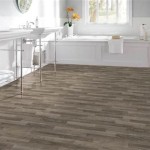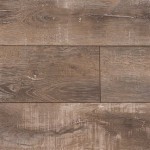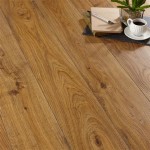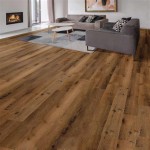Allen + Roth Flooring Warranty: A Comprehensive Guide
Allen + Roth flooring products are commonly found at Lowe’s and encompass a variety of flooring types, including laminate, vinyl, and tile. Understanding the warranty associated with these products is crucial for any homeowner considering or already possessing Allen + Roth flooring. This document aims to provide a detailed overview of the Allen + Roth flooring warranty, outlining its coverage, limitations, and the steps required to file a claim. It is important to consult the specific warranty information sheet included with your flooring purchase, as terms and conditions can vary depending on the product type and purchase date. This article serves as a general guide and should not be considered a substitute for the official warranty documentation.
Warranties are essentially guarantees provided by the manufacturer or seller regarding the quality and performance of a product. They offer protection to the consumer against defects in materials or workmanship. In the context of flooring, warranties typically cover issues such as premature wear, fading, staining, and manufacturing defects. The length and scope of the warranty can vary significantly depending on the product type and the specific terms outlined by the manufacturer. Thoroughly reviewing the warranty document is essential before installation to understand what is covered and what is not.
It is important to note that warranties are not insurance policies. They do not cover damage caused by accidents, misuse, improper maintenance, or natural disasters. They are specifically designed to protect against defects inherent in the product itself, provided it's been installed and maintained according to the manufacturer's instructions. Failure to adhere to these instructions can often void the warranty, making it crucial to follow them meticulously.
Understanding the Different Types of Allen + Roth Flooring Warranties
Allen + Roth offers warranties that vary depending on the flooring type and its intended use (residential or commercial). Commonly, these warranties are broken down into residential and commercial categories, each with its own specific terms, coverage periods, and limitations. Understanding the differences between these categories is crucial to ensuring you are aware of the protection you are entitled to.
Residential Warranties: These warranties are designed for flooring installed in private residences. They generally offer more comprehensive coverage and longer durations compared to commercial warranties, reflecting the typically lower traffic and less demanding conditions in a residential setting. Residential warranties often cover issues like wear-through of the wear layer (in vinyl flooring), fading, staining, and manufacturing defects under normal residential use. The duration of residential warranties can range from a few years to a lifetime, depending on the specific product and its quality.
Commercial Warranties: These warranties are designed for flooring installed in commercial settings, such as offices, retail stores, and restaurants. Commercial environments typically experience higher traffic, more demanding use, and greater potential for damage compared to residential settings. As a result, commercial warranties typically offer shorter durations and more limited coverage compared to residential warranties. They often cover issues like wear-through of the wear layer and manufacturing defects under normal commercial use, but may have stricter limitations on staining and other forms of damage. It is essential to understand the specific conditions that define "normal commercial use" as outlined in the warranty document.
It is crucial to select the appropriate flooring and warranty for the intended use. Installing residential flooring in a commercial setting will likely void the warranty, as the product is not designed to withstand the demands of a commercial environment. Conversely, while commercial flooring can be installed in a residential setting, it often comes at a higher cost and may not be necessary for the typical residential application.
Key Elements Covered by the Allen + Roth Flooring Warranty
The specific elements covered by the Allen + Roth flooring warranty can vary depending on the flooring type and the terms outlined in the warranty document. However, some common elements are typically covered across most Allen + Roth flooring products. Understanding these key areas of coverage can help you determine whether a particular issue falls under the warranty's protection.
Manufacturing Defects: This is a fundamental aspect of most flooring warranties. It covers defects in the materials or workmanship of the flooring product that were present at the time of purchase. Examples of manufacturing defects include delamination (separation of layers in laminate or vinyl flooring), warping, and dimensional instability. The warranty typically covers the cost of replacing or repairing flooring affected by manufacturing defects, provided the flooring was installed and maintained according to the manufacturer's instructions.
Wear Layer: For vinyl flooring, the wear layer is a crucial component that protects the underlying layers from wear and tear. The warranty often covers wear-through of the wear layer under normal residential or commercial use, depending on the warranty type. Wear-through typically refers to the complete erosion of the wear layer, exposing the underlying print film or core layer. The warranty may cover the cost of replacing or repairing flooring where the wear layer has worn through prematurely, provided the flooring was properly maintained.
Fading and Staining: Some Allen + Roth flooring warranties cover fading and staining under normal use. Fading refers to the loss of color or vibrancy of the flooring due to exposure to sunlight or other environmental factors. Staining refers to the permanent discoloration of the flooring caused by spills or other substances. The warranty's coverage for fading and staining may be limited to specific types of stains or specific levels of fading. It is important to review the warranty document to understand the specific limitations and exclusions related to fading and staining.
Water Resistance: Some Allen + Roth flooring products, particularly vinyl flooring, are marketed as water-resistant or waterproof. The warranty for these products may cover damage caused by water exposure under certain conditions. However, it is important to understand the specific definition of water resistance or waterproof as outlined in the warranty document. The warranty may not cover damage caused by flooding, standing water, or improper installation. It is also important to note that even water-resistant flooring can be damaged by prolonged exposure to moisture.
Factors That Can Void the Allen + Roth Flooring Warranty
Several factors can void the Allen + Roth flooring warranty, rendering it invalid and leaving you responsible for the cost of repairing or replacing damaged flooring. Understanding these factors is crucial to ensuring that your warranty remains valid throughout its coverage period. The most common factors that can void the warranty relate to improper installation, inadequate maintenance, and misuse of the flooring.
Improper Installation: Following the manufacturer's installation instructions meticulously is paramount. Failure to do so is a common reason for warranty claims to be denied. This includes using the correct underlayment, allowing for proper expansion gaps, acclimating the flooring to the room's environment before installation, and using appropriate adhesives and tools. If the flooring is not installed correctly, it may be more susceptible to damage, and the warranty will likely be voided.
Inadequate Maintenance: Proper cleaning and maintenance are essential for preserving the appearance and performance of your flooring. The manufacturer's guidelines for cleaning and maintenance should be strictly followed. Using abrasive cleaners, harsh chemicals, or improper cleaning methods can damage the flooring and void the warranty. Regular sweeping, vacuuming, and mopping with approved cleaning solutions are typically required to maintain the warranty.
Misuse and Abuse: Flooring is designed for normal residential or commercial use, and it is not intended to withstand extreme conditions or abuse. Damage caused by heavy objects, dragging furniture, dropping sharp objects, or excessive moisture exposure can void the warranty. It is important to protect the flooring from such potential sources of damage and to use appropriate precautions, such as furniture pads and entrance mats.
Modifications and Alterations: Making any modifications or alterations to the flooring can also void the warranty. This includes refinishing, painting, or adding a sealant that is not approved by the manufacturer. Such modifications can change the flooring's properties and make it more susceptible to damage, and the warranty will likely be voided.
Use of Non-Approved Products: Using cleaning products, adhesives, or other materials that are not specifically approved by the manufacturer can also void the warranty. The manufacturer typically recommends specific products that are compatible with the flooring and will not damage its surface or structure. Using non-approved products can lead to discoloration, warping, or other forms of damage, and the warranty will likely be voided.
Failure to Address Issues Promptly: Ignoring or delaying the repair of minor issues, such as small cracks or water leaks, can lead to more significant damage and potentially void the warranty. It is important to address any problems promptly to prevent them from escalating and causing further damage to the flooring. Documentation of these actions, including dates and details of the repairs, can be helpful if a warranty claim becomes necessary.
By understanding these factors and taking appropriate precautions, you can significantly increase the likelihood of maintaining a valid Allen + Roth flooring warranty throughout its coverage period.
Filing an Allen + Roth Flooring Warranty Claim
If you encounter an issue covered by your Allen + Roth flooring warranty, it is important to file a claim promptly and correctly. The process typically involves gathering documentation, contacting the retailer or manufacturer, and providing detailed information about the issue. Following the proper procedures can help ensure that your claim is processed efficiently and effectively.
Gather Documentation: Before contacting the retailer or manufacturer, it is essential to gather all relevant documentation related to your flooring purchase. This includes the original purchase receipt, the warranty document, and any installation records. The purchase receipt serves as proof of purchase and is required to verify the date of purchase. The warranty document outlines the specific terms and conditions of the warranty, including the coverage period and exclusions. Installation records can help demonstrate that the flooring was installed according to the manufacturer's instructions. Photographs or videos of the issue can also be helpful in documenting the damage.
Contact the Retailer or Manufacturer: The first step in filing a claim is to contact the retailer where you purchased the flooring or the manufacturer directly. Lowe’s, in this case, would be the initial point of contact. You can typically find contact information on the warranty document or the manufacturer's website. When contacting the retailer or manufacturer, be prepared to provide your name, contact information, the product model number, the date of purchase, and a detailed description of the issue you are experiencing. It’s advisable to keep a record of all communication including dates, times and the names of any representatives you speak with.
Provide Detailed Information: When describing the issue, be as specific as possible. Explain the nature of the damage, when it occurred, and any potential causes. Provide photographs or videos to support your claim. The more information you provide, the easier it will be for the retailer or manufacturer to assess your claim and determine whether it is covered by the warranty.
Inspection and Assessment: Once you have filed your claim, the retailer or manufacturer may require an inspection of the flooring to assess the damage. They may send a representative to your home or business to conduct the inspection. Cooperate fully with the inspection process and provide any additional information that may be requested. The inspector will typically prepare a report outlining the findings of the inspection, which will be used to determine the validity of your claim.
Claim Resolution: After the inspection, the retailer or manufacturer will review the inspection report and determine whether your claim is covered by the warranty. If the claim is approved, they will typically offer a remedy, such as repairing or replacing the damaged flooring. The specific remedy will depend on the nature of the damage and the terms of the warranty. If the claim is denied, the retailer or manufacturer will provide a written explanation of the reasons for the denial. If you disagree with the decision, you may have the option to appeal the decision or seek legal recourse.
Following these steps can help ensure a smooth and efficient warranty claim process.

Allen Roth Flooring At Com

Allen Roth Classic Flooring At Com

Allen Roth Sample Urbanite Oak Water Resistant Laminate Flooring In Brown 53515

Allen Roth Sample Baldwin Maple Water Resistant Wood Plank Laminate Flooring 53340 At Com

Allen Roth Lodge Oak Wood Plank Laminate Flooring In The Department At Com

Allen Roth Sample Barrel Hickory Wood Plank Laminate Flooring In The Samples Department At Com

Allen Roth And Reclaimed Oak 12 Mm T X 6 In W 50 L Water Resistant Wood Plank Laminate Flooring 17 07 Sq Ft Carton The

Allen Roth Aged Lodge Oak 3 In W X 4 T Varying Length Wirebrushed Solid Hardwood Flooring 24 Sq Ft Carton 25369 At Com

Allen Roth Laminate Review

Allen Roth Marcona Hickory Wood Plank Laminate Flooring 17 53 Sq Ft Carton In The Department At Com
Related Posts








